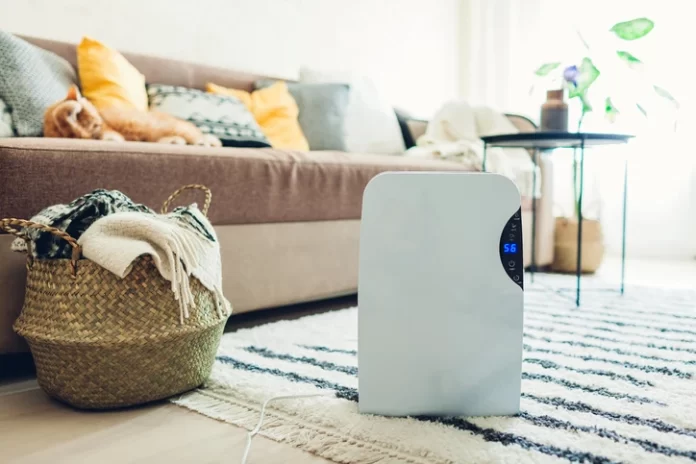Humidity levels in our homes can sometimes feel overwhelming if left unregulated. Humidity control is incredibly important, as high humidity is a factor for mould growth, which can eventually develop into a serious health issue that affects your property and health.
If you need to find the source of high humidity, seeking expert help from professionals like ICE Cleaning is highly recommended. Its technicians specialise in mould-related services, providing thorough mould remediation through your local council to ensure the best results.
Read on to learn how to find out where damp could be hiding and how using simple tools like hygrometers can regulate moisture levels.
Table of Contents
Understanding the relationship between humidity and mould growth
The interaction between humidity and mould is complex, but it comes down to one simple factor: mould spores are always around us. These spores need the right conditions, like warm temperatures and moisture, to begin growing a mould colony.
Mould is attracted to damp places, thriving when relative humidity levels rise above 60%. Therefore, high humidity lets mould grow easily and spread faster.
A higher concentration of water vapour in the air means there is a reliable water source for mould. This natural process – osmosis – enables mould to absorb water directly from its environment. With all these resources, the fungus can thrive and spread to other parts of your home unless you take control.
Identifying high-humidity areas in your home
The bathroom and kitchen are often the most humid rooms in a house due to frequent water use. When you shower or cook, steam releases into the air, increasing humidity levels. These rooms need good ventilation to help reduce excess moisture.
Another spot that tends to be humid is the basement. It is underground and often poorly ventilated, making it a perfect breeding ground for mould. In addition, if there is any leakage from outside rainwater or groundwater seeping in, this will add more moisture.
A less obvious place where humidity might lurk is inside wardrobes or cupboards against external walls. Cold exterior walls can cause condensation on the inside surfaces of these storage spaces when warm air encounters them – creating an ideal environment for mould growth.
If you need to know if an area has too much humidity, a simple way is by using a hygrometer. This device measures relative humidity levels, so you can keep track of vulnerable areas around your home.
Identifying high-humidity zones is more than finding existing problem spots; it also involves understanding potential risk areas before they become bigger issues.
Monitoring and maintaining ideal humidity levels
To manage indoor mould, we need to control the humidity in our homes. A hygrometer is a device for measuring the relative humidity in your home, helping to determine whether mould could start growing.
Hygrometers are not hard to use. You simply place them in different parts of your home – especially those areas prone to high moisture, like bathrooms or basements – and they will give you accurate readings within hours.
Keeping indoor humidity below 60% can help prevent mould formation, but if it falls too low (below 30%), it may lead to dry skin and other discomforts.
Maintaining Humidity Levels
- Ventilation: Regularly airing out damp spaces reduces moisture build-up. You can install extractor fans or air vents where necessary.
- Air conditioners and dehumidifiers: These appliances remove excess water from the air; they’re great for regions with high outdoor humidity levels or during summer months when indoor air tends to become more humid.
- Inexpensive solutions: Some things you can do yourself include opening doors and windows, drying clothes outdoors or in a dryer, and wiping down surfaces vulnerable to condensation.
If you are still struggling with high household moisture after trying these methods, professional services like ICE Cleaning offer expert help on all mould-related issues and infestations. Its experts offer damp surveys, water detection services, and mould remediation.
If you want to learn more about their specialist cleaning services, you can visit their website today for a free site survey and no-obligation quote.








